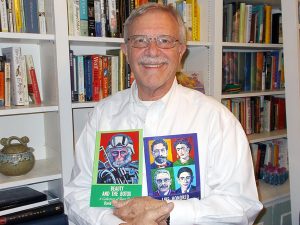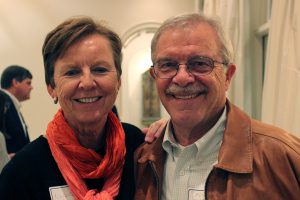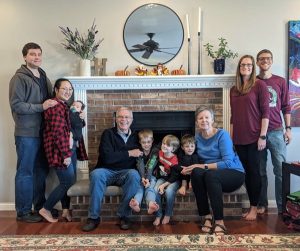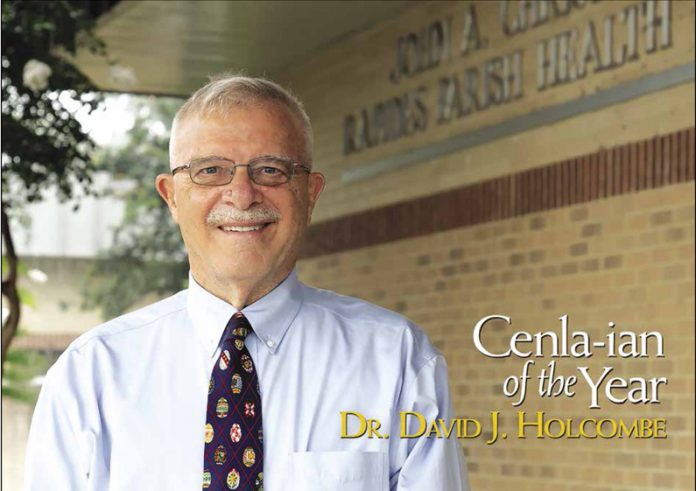Though not a native son, this year’s Cenla-ian of the Year honoree has called Central Louisiana home for nearly forty years. Over those decades, he has made significant and impactful contributions to his adopted home in a variety of ways, and perhaps at no time more so than over the last eighteen months as Cenla, the state, nation and world have faced down a once-in-a-generation pandemic. For his contributions to the arts as a painter, author and playwright, to the field of medicine and public health, the Cenla Focus editorial board is proud to honor Dr. David J. Holcombe as the 2021 Cenla-ian of the Year.
David Jeffrey Holcombe was born at UCSF hospital in San Francisco in 1949 to Kenneth and Virginia Holcombe. At the time of his birth, David’s father was studying dentistry and working alongside his father, a dentist in Oakland, California. After a few years, David’s immediate family left the Oakland area and moved to Walnut Creek, California, which he describes as “a lovely agricultural village at the time” in the East Bay. “I had a very idyllic childhood,” he recalls. “I had an excellent grammar school and high school.” His early education featured a unique quirk in the curriculum that would come to play a large role in guiding his future. “One of the curiosities about my high school is that I learned French,” Dr. Holcombe explains. “I started in the 7th grade and went all the way through high school.” Under the tutelage of Mademoiselle Johnson throughout his high school years, David and his classmates graduated as fluent French speakers.
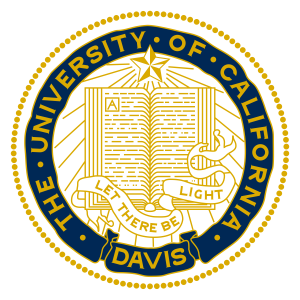
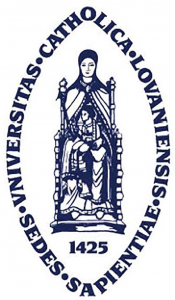
Unlike in the United States, European med schools utilize a pyramidal system. “They start with 1,000 students and end up at 200-250 after seven years,” explains Dr. Holcombe. Almost all of the exams were oral. Students were required to master tremendous amounts of medical information towards an exam that consisted of just two oral questions—pass or fail. “It was a very challenging way to study,” he recalls. “I couldn’t afford to repeat any years, so I was determined to succeed.” In the end, his persistence paid off as David became Dr. David Holcombe, graduating summa cum laude, fifth in his class, in French, in Belgium. “I owe a great debt to Mademoiselle Johnson,” he chuckles, recalling his high school French teacher.
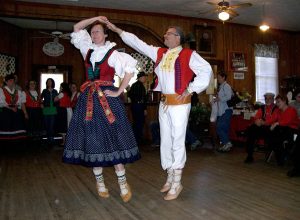
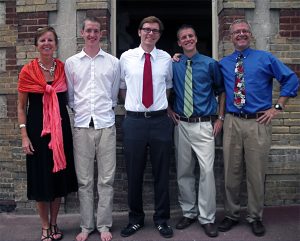
After completing medical school, Dr. Holcombe was solicited to return to the U.S. through the renowned Johns Hopkins University in 1983. Though his unorthodox course of study had previously served as a hindrance, it now became an asset. “They knew that American medical students that were educated abroad had a solid education and were generally more mature,” he explains. He was placed in a very small clinic called the Wyman Park Clinic for his residency. Unlike their American-trained counterparts, students from Europe had comparatively little in-hospital training. “It was quite a shock,” he notes of the on-the-job learning curve. “I had to learn basics of hospital work that American students learned during medical school.” Through hard work and tenacity, he closed the experience gap and completed his residency.
With his formal education complete, the Holcombes shifted their focus to the future. He knew that he didn’t want to return to California or Florida, splitting the geographic distance and landing somewhat in the middle. “Nicole and I thought, ‘Okay, let’s go to Louisiana. Everyone speaks French; they must need doctors; it’ll be a perfect fit.’,” he recalls with a laugh. They arrived in 1986 to discover that, while the area certainly needed physicians, everyone does not, in fact, speak French. “My wife did not speak English when we came,” he recalls. “We always spoke French at home.” Nicole was faced with the task of learning English and also learning to drive. He jokingly describes her Driver’s Ed class as “all 15 1/2 year old boys and this adult lady with a really strong accent.” He was concerned about the culture shock for his beloved bride. “I figured Nicole would hate it here with no high culture, small town, and limited resources,” he recalls. To his pleasant surprise, he says, “She’s been happy since day one! In fact, I had more of a transition problem coming from the capital of Europe to the heart of Louisiana. In the end, it was actually a little harder on me!”
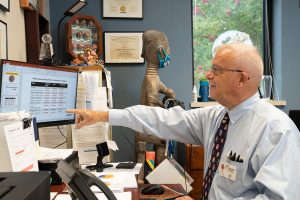
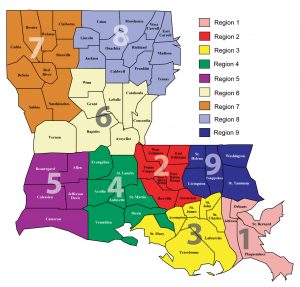
In addition to the direct care provided, the other core function of the Office of Public Health is to provide for disaster preparedness. Just as he arrived to the OPH, construction on the Megashelter adjacent to LSUA was being completed. This means that his office maintains responsibility for administering the medical special needs shelter and medical evacuation transportation. Of the disaster preparedness work, Dr. Holcombe says, “It’s episodic, but enormous. We had four hurricanes in the middle of the pandemic. The shelter was activated for 76 days and nights. That is unheard of since Hurricane Katrina.”
Dr. Holcombe also serves as the public face of the Office of Public Health in Region 6. In addition to his monthly contributions to Cenla Focus which serve to education the public on varying aspects of public health, he is also available for interviews and to provide information for the news and other outlets across various media. It’s a part of the job that has become constant in the ever-changing landscape of the pandemic.
“COVID has sort of swept away attention from previously more focused areas and ongoing administrative functions,” says Dr. Holcombe. While it would be easy to become overwhelmed, he is quick to credit the successes of the Office to the hard work and support of his staff. “COVID has been horrendous,” he exclaims. “It has elevated public health to a level it’s never been before. This has been a really heavy lift, and I couldn’t have done it without my whole department.” He credits excellent relationships with collaborators, subordinates, and organizations like the Louisiana National Guard, the Rapides Foundation, the United Way, the Community Coalition, the Homeless Coalition, CLASS and more as instrumental in meeting the public health needs of the community in the midst of the pandemic.
Dr. Holcombe continues to stress the importance of widespread vaccination in getting ahead of the pandemic. “We hit a brick wall” in terms of vaccine hesitancy, he explains, despite the proven safety and efficacy of the available vaccines. “It’s the fear factor—the fear of the unknown, of fertility concerns, government control, long-term effects. It almost always boils down to a fear of loss of control and anxiety.” The Office of Public Health has given over 23,000 vaccines in Central Louisiana. Despite this on-going effort, joined by local doctors, pharmacies, hospitals, urgent cares and other providers, we have only achieved 24% vaccination rates in Central Louisiana. “Going back to school, perhaps without mask mandates, represents a perfect storm for the transmission of COVID and the development of new and more deadly variants,” says Dr. Holcombe. And if the pandemic wasn’t enough, Central Louisiana is also in the midst of concurrent outbreaks of syphilis and increased opioid abuse and overdose. Dr. Holcombe and his team at OPH continue to work tirelessly to meet these multifaceted challenges on several different fronts.
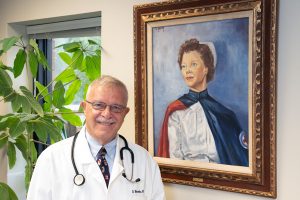
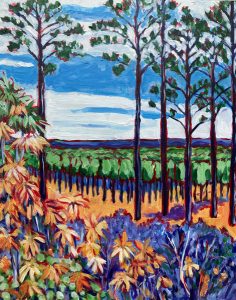
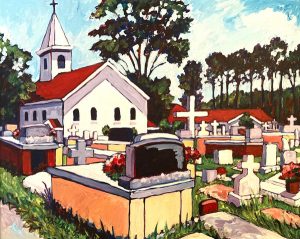
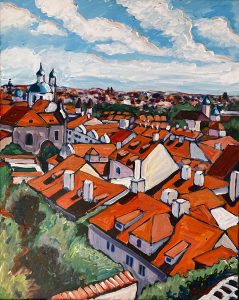
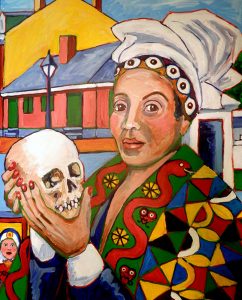
As a painter, Dr. Holcombe has a distinctive style. During medical school, he painted in mostly watercolors, due to the high price of other media. Currently, he paints primarily acrylics on canvas. His paintings are included in collections all over the United States and Europe. As described in his “Vision and Visionary” collection that was exhibited at River Oaks Arts Square Arts Center in 2010, he “chooses subjects from our daily existence. Certain themes, such as social violence, war and politics remain constant inspirations.” He explains, “If you look at them in whole, they are an illustration of a whole time, period and place. In part, they’re cathartic, but they’re also social commentaries.” He also includes portraits which commemorate people who have contributed to the world, whether they be local and contemporary or far away and from another time.
